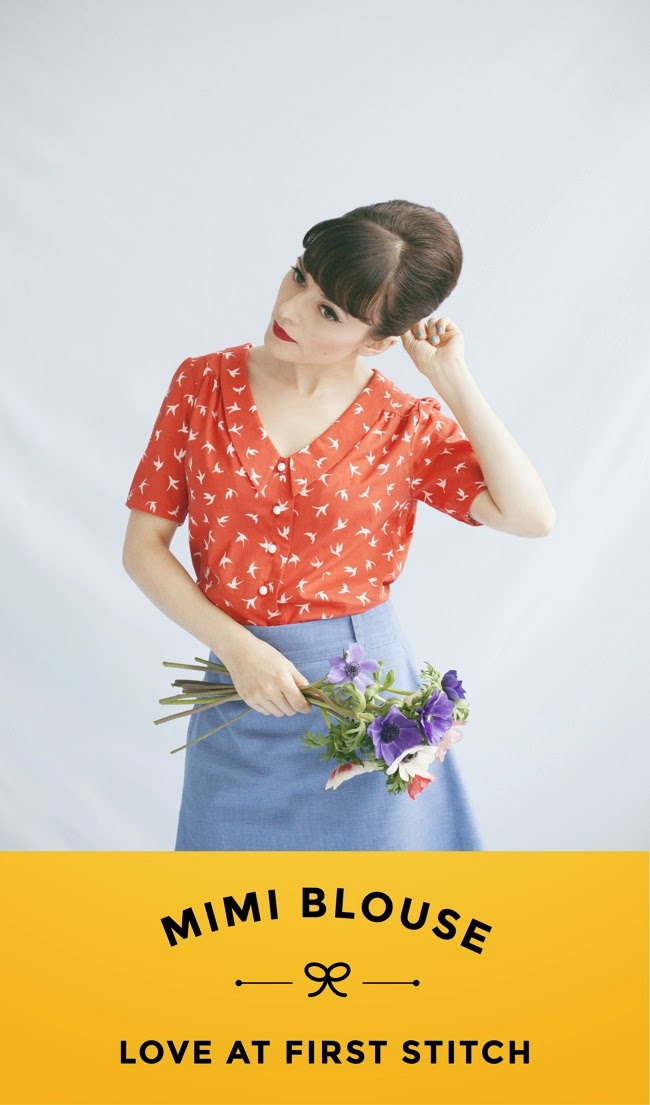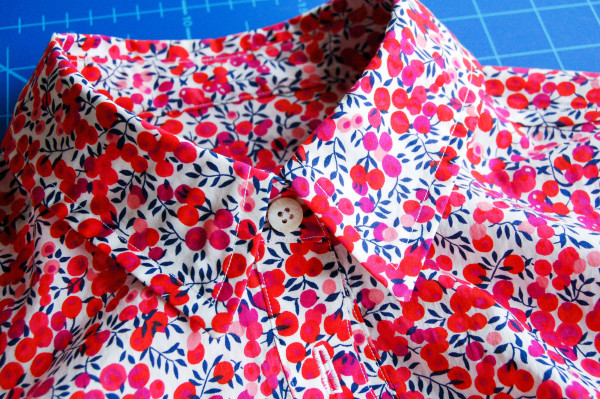I've developed a bit of 'thing' recently for sleeveless shirts ... well, before we lost the glorious summer weather. I love the fact that they are so cool and comfy whilst looking smart- making them perfect for my work wardrobe.
I always start my makes by picking a pattern and this one was no exception. The pattern comes from Gertie Sews Vintage Casual by Gretchen Hirsch. The original pattern comes from the 40's style blouse pattern (left picture) which doesn't really appeal to me but there is also a variation for a sleeveless blouse (right picture)which I much prefer.
I really enjoy using Gertie's patterns. The instructions are very well written with nice diagrams to give you guidance. What I really like is that all the techniques are in the beginning sections of the book, so there is no need to stop and find a tutorial or another book when you need to know how to construct an armhole facing using bias binding. Something new to me about this blouse was the fact that I first had to make some edits to the pattern, such as adding length and extending darts.
I picked this red floral print fabric with the blouse pattern especially in mind. It comes from my trip to Walthamstow market and it was only £2.20 a metre of which I bought 1.5m. It was lovely to work with, easy to press and cut so no problems there. It has a nice drape to it which has given the blouse a soft look, rather than a starchy collar.
The construction was straight forward, however, I challenged myself to get this done in a day! I made this on a Saturday and needed to have it finished as I was going down to my sisters the next day. I had it in my mind that I wanted to wear it for a day trip to the Isle of Wight we had planned for the Monday.
I cut it out on Saturday morning and had it sewn up, minus the buttons and button holes by dinnertime that evening. I had just enough time to sew the buttonholes and buttons on Sunday morning and then I finished off the hand stitching and neatened it up in the evening at my sisters. Not quite a day, but some speedy sewing at least for me.
I'm reasonably pleased with this blouse. I wasn't sure about the fit at first, as I wanted it to be more fitted. I did wear it to the Isle of Wight and it was comfortable to wear. On reflection, I'm not sure that it would look right if it was ultra fitted.
Despite speedy sewing on my part, it is neatly finished and the construction went well. I managed to muck up one of the darts on the front left of the blouse but it's not noticeable due to the print. No one ever looks that closely anyway!
For the next one (yes, it's already in the pipeline!) I'm going to consider the fit more carefully and see if I can tweak it to make it slightly more form fitting. Maybe by sewing wider seams just along the sides? I don't like the horizontal buttonholes and so will change these to vertical ones.
This blouse is definitely very wearable - I'm looking forward to wearing it to school when we start back up again - and I haven't lost my love of shirts with collars. I see plenty more in my future!
Do you like wearing shirts with collars?



















































